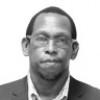How can we make the world a more sensory inclusive place?
The blinding flash of fluorescent lights, the sound of a mechanical scrubber buffing off layers of plaque, the minty burn of a mouthwash rinse — each of these are sensory experiences that can be off-putting for even the most relaxed visitor to the dentist’s office. But for an individual with sensory sensitivities, these, and other healthcare-related sensory stimuli, can be reasons to avoid medical spaces altogether.
Sensory sensitivity, also referred to as sensory processing sensitivity, or SPS, is often a comorbidity to forms of neurodivergence, like autism spectrum disorder (ASD) or attention-deficit/hyperactivity disorder (ADHD). What might be a tolerable change in light, sound, touch, smell, taste, movement, balance, and interoception (internal body awareness) for most people can become an overwhelming — or downright painful — experience for an individual with sensory sensitivities.
Despite evidence that roughly 1 in 4 individuals have a sensory need or an invisible disability, most of the world — from schools to recreational spaces to offices to healthcare spaces — is not designed with these sensitivities in mind. As Virginia Spielmann, PhD, an occupational therapist at the Star Institute for Sensory Processing, puts it, “There is a belief that there is one right way to be human. Instead of helping these humans belong, we ask them to adapt in the hopes that one day they maybe can belong.”
Fortunately, a movement of doctors, activists, corporations, and community members around the world are working to change beliefs around sensory sensitivity and other forms of neurodivergence at a systemic level. They’re shifting the narrative from one rooted in deficiencies or shortcomings towards one of acceptance and the embrace of differences.
But changing this narrative also requires work and reflection at a more individual scale. “We’ve accepted the myth that there’s one right way to be human — the neurotypical way — and it’s to our detriment,” said Dr. Spielmann. “I think the narrative needs to move from sensory inclusive spaces being the exception to them being the norm. These are spaces that prioritize the embodied human experience and the wellness of our nervous systems and our connection to each other over economic gain and moving people through our healthcare systems as fast as possible.”
Dr. Spielmann sees the shift towards sensory sensitivity as a fundamentally additive movement that raises the standard of living for everyone. “Universal design should be sensory design,” she said. For example, ramps into the building can be used by everyone. Dimmed fluorescent lighting and reduced volume creates a more hospitable environment for everyone. “When a building accommodates sensory differences, you are going to have more success, greater productivity, less burnout, less stress for everyone,” she said.
By creating and advocating for more sensory sensitive environments, these changemakers are creating a more inclusive world for everyone. Meet some of the individuals on the front lines of this paradigm shift, some of whom appear in the documentary Sensory Overload.
The Community Builder
Lola Olley has always looked to her community for support. It was true when her family immigrated to the states from Nigeria when she was young, and it was particularly true when it became clear that there was something different about her brother Kunle’s development. “One day he just stopped talking and we would never hear his voice again,” she said.
Olley remembers seeing the way her parents struggled to raise a child in a time when resources for neurodivergence and sensory sensitivities were few and far between. She was witnessing firsthand what research reinforces — that caregiver strain is often linked to financial strain, family conflict, loss of a sense of freedom, and negative effects on personal health. “There’s this Nigerian song called........






















 Toi Staff
Toi Staff Tarik Cyril Amar
Tarik Cyril Amar Andrew Mitrovica
Andrew Mitrovica Rachel Marsden
Rachel Marsden Patrick Gathara
Patrick Gathara Belen Fernandez
Belen Fernandez Sharona Margolin Halickman
Sharona Margolin Halickman Alexey Kupriyanov
Alexey Kupriyanov Gideon Levy
Gideon Levy
